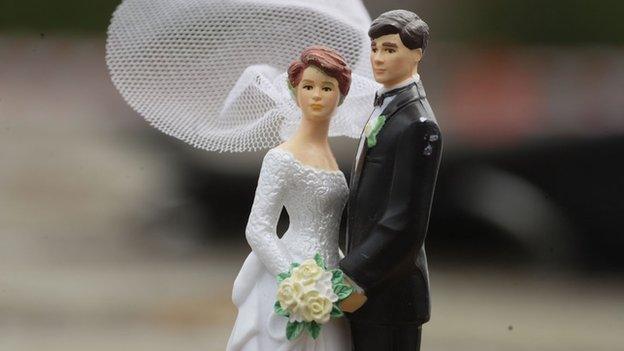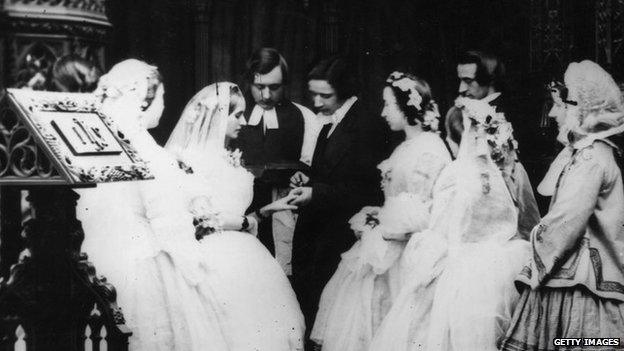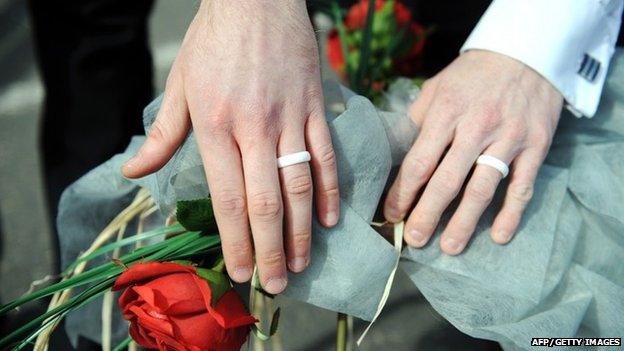How has Scotland's law on marriage evolved over the centuries?
- Published

MSPs have passed a new law which will see same sex marriages take place in Scotland. But how has the law ended up where it is today? It turns out the country's couples are no strangers to rule changes.

Middle ages to 1700s
From the early middle ages, girls could get married from the age of just 12 - and boys could be 14.
That became important when the law changed in England in the 18th century.
Under the 1753 Marriage Act, anyone under 21 needed their parental permission to wed.
It didn't apply in Scotland - and that meant young couples came over the border to places like Gretna and Coldstream to get wed.

Victorian times

In 1856 things changed again, thanks to the Marriage (Scotland) Act.
It meant at least one of the bride and groom needed to live in Scotland for 21 days before they could be married in the country.
The change put an end to the flight of young English couples north.

Into the 20th century
By the turn of the 20th century things remained much the same.
In fact, it wasn't until 1929 that the age you could get married was finally raised.
From that year, both husband and wife had to be at least 16 years old - just as it remains to this day.

By 1940
Up until 1939, three types of irregular marriage existed in Scotland. These were cases where the couple, in effect, agreed to be married without an official ceremony.
They included simply a mutual agreement in front of a witness, a promise of marriage followed by sexual relations, and marriage by "habit and repute" - if a man and woman behaved and lived as if a married couple.
The first two of these were scrapped as of 1 January , 1940, by the Marriage (Scotland) Act 1939.

The 1970s

The next big change came when the 21 day's residence rule was abolished in 1977.
That meant a return to the popularity of couples visiting Gretna and the like to tie the knot - but perhaps for romantic rather than practical reasons.
Although parental permission still wasn't needed in Scotland (and isn't to this day).

The new millennium
After the millennium another seismic shift occurred. The then Scottish Executive legislated for civil partnerships.
In 2005, the first ceremonies were held - allowing same sex couples to legally recognise their relationships.
A year later the only remaining type of irregular marriage was abolished.
Thanks to the Family Law (Scotland) Act 2006, couples were no longer legally regarded as married simply on the basis of "habit and repute".
Marriages existing before 2006 on this basis still applied.

The present day

And now, in 2014, the latest change to Scotland's marriage law takes place.
MSPs voted in favour of same sex couples being able to marry with the first ceremonies likely in the autumn.
Some groups, including religious leaders, have expressed concern that the law discriminates against those who don't agree with the changes.
Supporters argue the Marriage and Civil Partnership (Scotland) Bill, external allows for religious and belief bodies to "opt in" to carrying out the ceremonies.